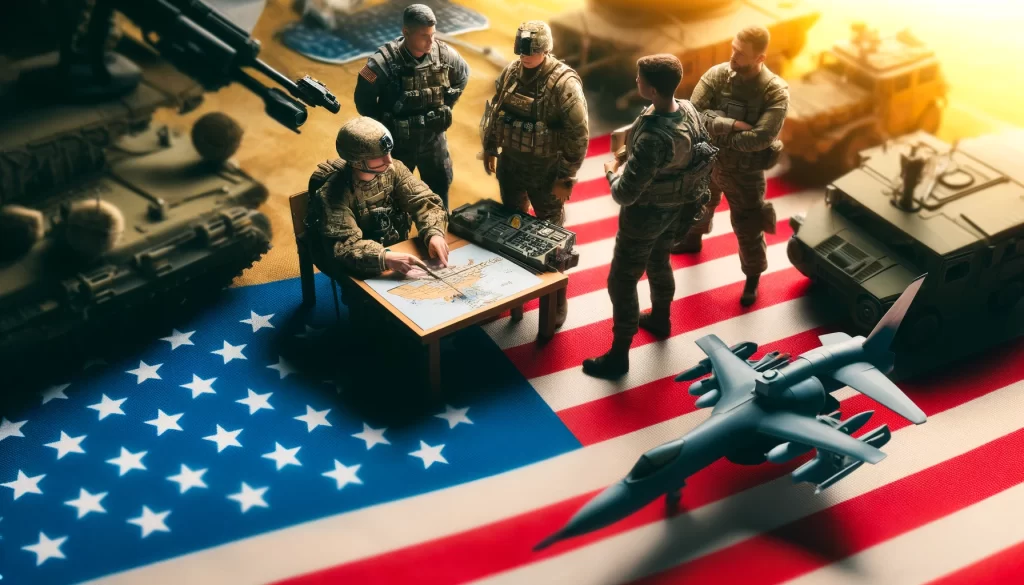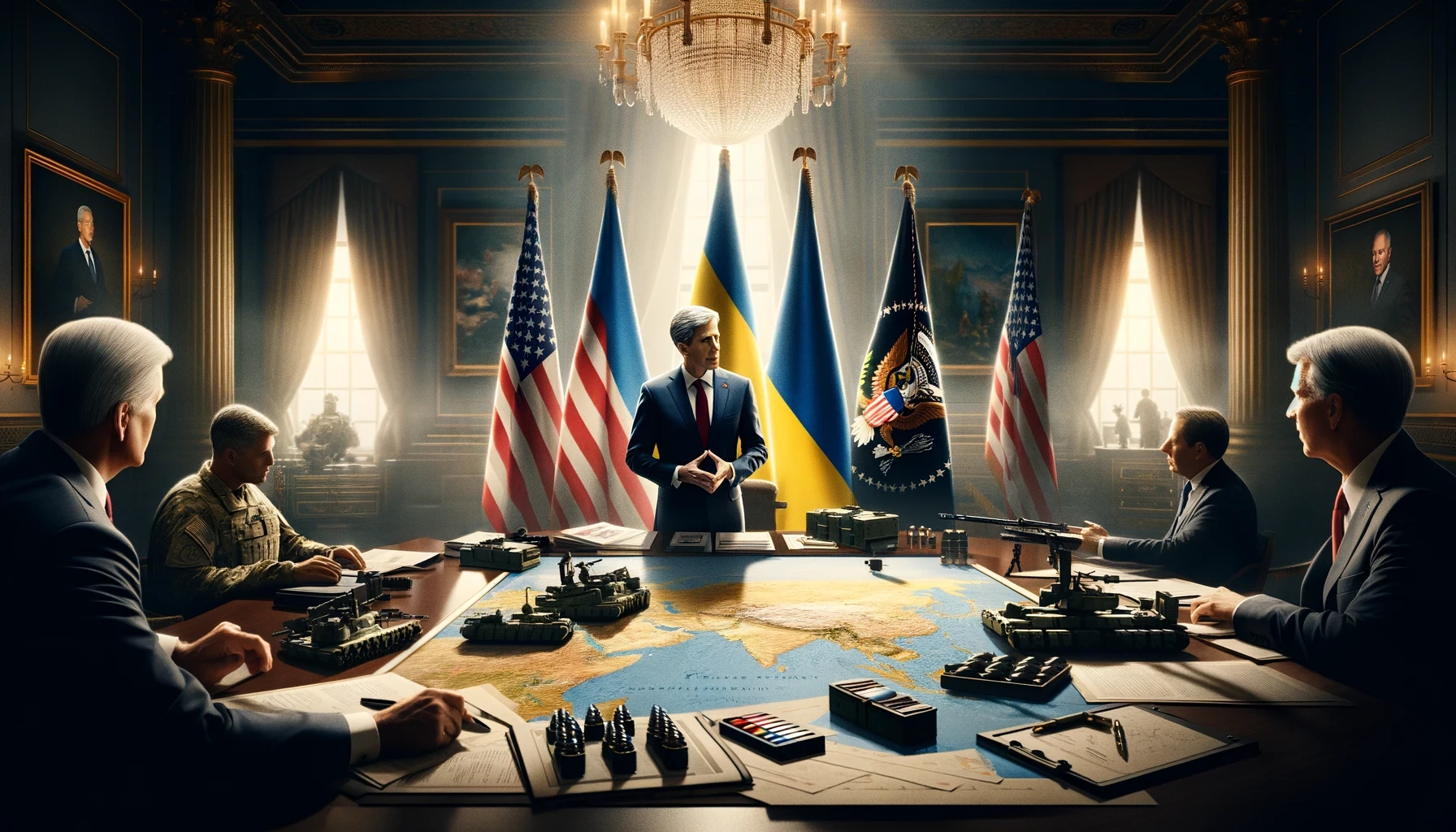Since the start of the conflict in Ukraine, President Biden has maintained a strict rule: Ukraine is not allowed to use American-supplied weapons to attack Russian territory. This restriction was put in place to avoid escalating the war into a broader conflict, which President Biden believes could lead to “World War III.” However, this policy is now being questioned within the U.S. government.
Secretary of State Antony J. Blinken, after a recent visit to Kyiv, has been advocating for a change in this policy. He argues that allowing Ukraine to target missile and artillery sites just across the Russian border could help counter Moscow’s recent advances. These targets, according to President Volodymyr Zelensky, have enabled Russia to make significant territorial gains. Blinken’s proposal is still in the early stages of discussion, and it is unclear how many of Biden’s advisors support it. It has not yet been formally presented to President Biden, who has traditionally been the most cautious in his administration about actions that might escalate the conflict.
Officials involved in these deliberations have noted that Blinken’s change in stance is driven by the recent escalation of the war by Russia. Moscow’s forces have positioned weapons just over the Ukrainian border, targeting the city of Kharkiv. Ukraine, unable to use American-supplied weapons against these sites, has been at a disadvantage. In an interview with The New York Times, Zelensky stated that the prohibition on using American weapons against these sites gives Russia a “huge advantage.”
For several months, Zelensky has been attacking Russian targets using Ukrainian-made drones, which lack the power and speed of American weapons. Additionally, Russia has improved its electronic warfare capabilities, making these attacks less effective. As a result, there is growing pressure on the United States to allow Ukraine to use American weapons against Russian military sites. However, Washington remains hesitant to allow attacks on Russian infrastructure, such as oil refineries.
Britain, usually aligned with U.S. war strategy, has lifted its own restrictions, allowing its “Storm Shadow” cruise missiles to be used against a broader range of Russian targets. British Foreign Secretary David Cameron, a former prime minister, stated during a visit to Kyiv that Ukraine “absolutely has the right to strike back at Russia.”

The U.S. is also considering training Ukrainian troops within Ukraine rather than in Germany. This shift would involve deploying American military personnel to Ukraine, a move previously prohibited by President Biden. This raises concerns about how the U.S. would respond if these personnel were attacked. Although Lviv, where the trainers would likely be based, is distant from the main combat areas, it has been periodically targeted by Russian forces.
Secretary of Defense Lloyd J. Austin III recently reiterated the administration’s position that American weapons should be used on targets inside Ukraine. However, he suggested that there might be exceptions for Russian aircraft operating from just over the border, which enable pilots to release glide bombs into eastern Ukraine. When pressed for details, Austin struggled to articulate the new standard, indicating the complexity of the issue.
Russia has responded to these discussions by conducting military exercises involving units that could use tactical nuclear weapons. Russian news reports claimed this was in response to “provocative statements and threats from Western officials against Russia.” However, U.S. officials have downplayed these actions as mere bluster and muscle-flexing.
Victoria Nuland, who recently left her position as the third-highest ranking official in the State Department, has publicly argued for lifting the ban on using American weapons against Russian targets. She believes that such a move is necessary due to Russia’s increased aggression. Nuland stated on ABC’s “This Week” that Ukrainian attacks should target Russian bases if those attacks are coming from across the border. She emphasized that Russia’s attacks on Kharkiv aim to decimate the city without deploying ground troops.
In his interview with The New York Times, Zelensky dismissed concerns about escalating the conflict, arguing that Russia has already escalated the war. He stressed the importance of being able to defend Ukraine using all available means. Zelensky believes that President Vladimir V. Putin of Russia is unlikely to follow through on threats to use nuclear weapons.
While some U.S. officials remain wary of provoking a severe reaction from Russia, Zelensky insists that using American weapons against Russian military units is crucial for Ukraine’s defense. He maintains that this is the only way to effectively counter the attacks. Zelensky’s stance is that at this desperate stage of the war, it is critical to let him use American weapons against Russian military units.
This article is based on the following article:

Background Information
1. The Conflict in Ukraine:
The conflict in Ukraine began in 2014 when Russia annexed Crimea, a region of Ukraine. This move was widely condemned by the international community. Subsequently, pro-Russian separatists in eastern Ukraine, supported by Russia, started an armed conflict with the Ukrainian government. This ongoing conflict has led to significant loss of life and displacement of people.
2. Role of the United States:
The United States has been a key supporter of Ukraine in its conflict with Russia. This support includes financial aid, military training, and supplying advanced weaponry. However, the U.S. has set strict conditions on how these weapons can be used to avoid escalating the conflict into a broader war, particularly one involving NATO (the North Atlantic Treaty Organization), of which the U.S. is a member.
3. NATO and its Significance:
NATO is a military alliance formed in 1949, comprising 30 member countries from North America and Europe. Its primary purpose is to ensure the security of its members through collective defense. An attack on one member is considered an attack on all. This principle, known as Article 5, aims to deter aggression against any member country.
4. Secretary of State and Secretary of Defense:
The Secretary of State is the U.S. government’s chief diplomat, responsible for foreign policy. Antony J. Blinken currently holds this position. The Secretary of Defense oversees the Department of Defense and the U.S. Armed Forces. Lloyd J. Austin III is the current Secretary of Defense.
5. Ukraine’s Military Strategy:
Ukraine has been using a combination of domestically produced drones and other military equipment to defend itself against Russian attacks. These drones are less powerful than the advanced weaponry supplied by the U.S., which has imposed restrictions on their use against targets within Russia.
6. Russia’s Military Actions:
Russia has been positioning its forces and weaponry close to the Ukrainian border, enabling them to launch attacks into Ukrainian territory. This strategy has put Ukraine at a disadvantage, prompting calls for a change in how Ukraine can use Western-supplied weapons.
7. Electronic Warfare:
Electronic warfare involves using the electromagnetic spectrum to sense, attack, and defend. It includes actions to detect and disrupt enemy communications and radar. Russia has improved its electronic warfare capabilities, making it harder for Ukraine to effectively use its drones and missiles.
8. The Risk of Escalation:
The term “escalation” in military conflict refers to an increase in the intensity or scope of the conflict. There are concerns that if Ukraine uses American weapons to attack Russian territory, it could provoke a severe response from Russia, potentially leading to a larger war involving more countries.
9. Tactical Nuclear Weapons:
Tactical nuclear weapons are designed for use on the battlefield, as opposed to strategic nuclear weapons, which are intended for long-range targets. These weapons have lower yields but can still cause massive destruction. Russia’s recent military exercises involving these weapons are intended to demonstrate its capability and readiness to use them if necessary.
10. Victoria Nuland and Her Role:
Victoria Nuland is a former senior official in the U.S. State Department known for her hawkish views on Russia. She has advocated for stronger U.S. support for Ukraine, including lifting restrictions on using American-supplied weapons against Russian targets.
11. President Volodymyr Zelensky:
Volodymyr Zelensky is the President of Ukraine. He was elected in 2019 and has been a prominent figure in rallying international support for Ukraine. Zelensky has emphasized the need for advanced weaponry to defend against Russian aggression effectively.
12. Strategic Importance of Kharkiv:
Kharkiv is a major city in northeastern Ukraine, close to the Russian border. It has been a significant target for Russian military operations due to its strategic location and industrial capabilities. Controlling Kharkiv would provide Russia with a crucial advantage in the conflict.
13. The Role of International Allies:
Countries like the United Kingdom have been strong supporters of Ukraine. The UK has provided advanced weaponry and has lifted restrictions on its use, allowing Ukraine to target Russian sites more effectively. This support contrasts with the more cautious approach taken by the U.S.
14. Implications of U.S. Military Training:
Training Ukrainian troops within Ukraine, as opposed to in Germany, would involve deploying American military personnel to a conflict zone. This move could expose them to direct attacks, raising concerns about the potential consequences and the U.S. response if such an attack occurs.

Debate/Essay Questions
- Should the United States allow Ukraine to use American-supplied weapons to attack Russian military targets across the border?
- What are the possible consequences of training Ukrainian troops within Ukraine rather than in Germany?
- Can Russia’s recent military exercises involving tactical nuclear weapons be seen as a credible threat or mere posturing?
Please subscribe to Insight Fortnight, our biweekly newsletter!
